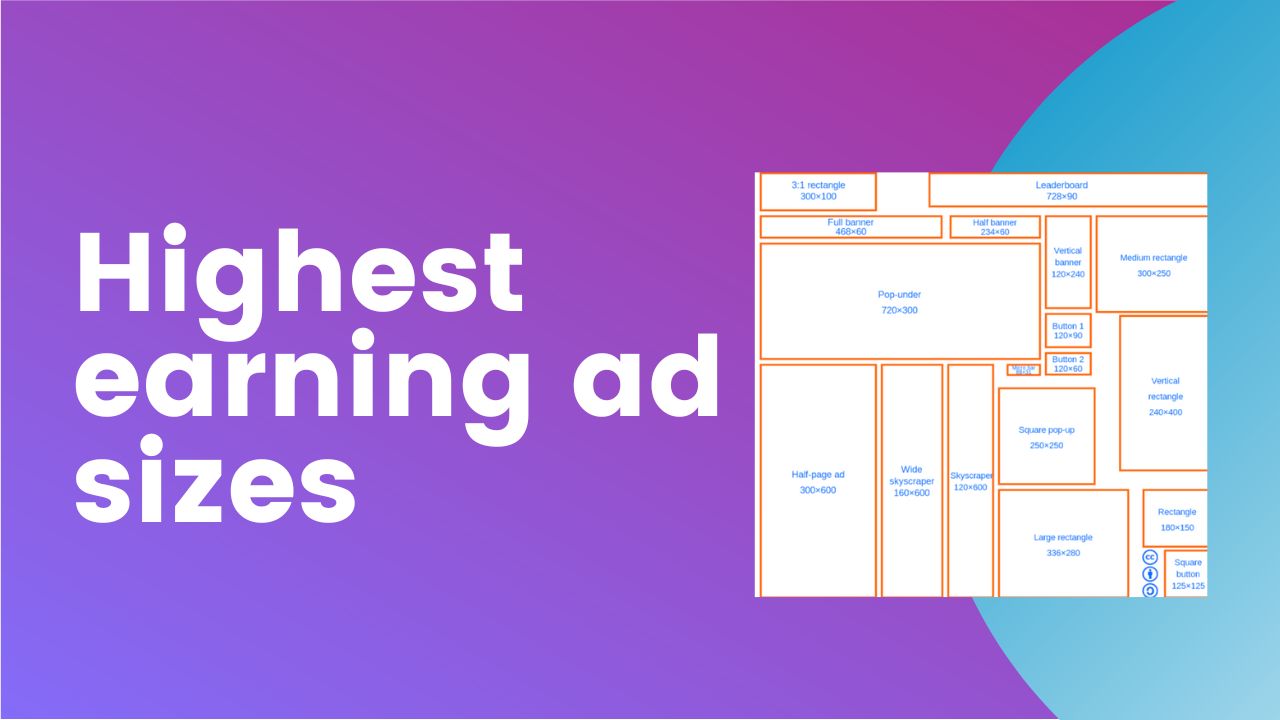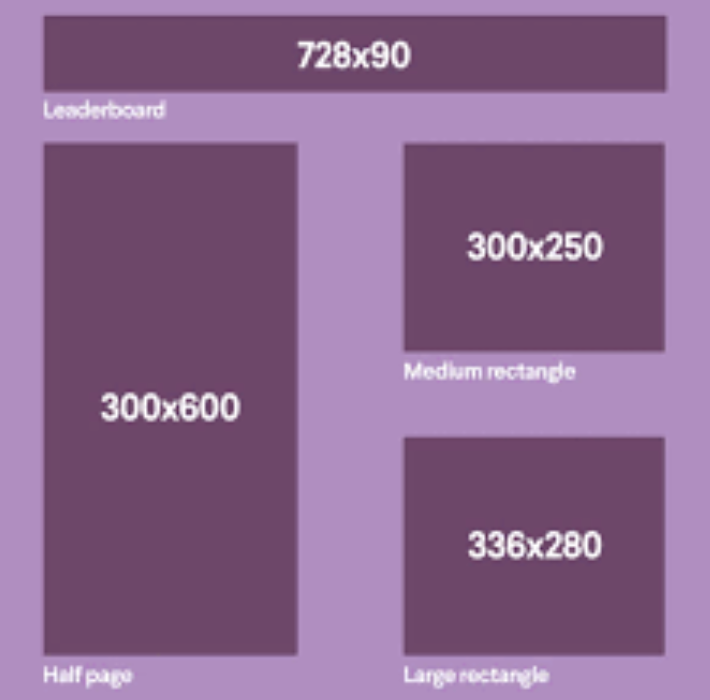
This post was most recently updated on March 18th, 2025
The top ad sizes that will be driving maximum revenue are 300×600 (Half-page), 336×280 (Large Rectangle), 728×90 (Leaderboard), 300×250 (Medium Rectangle), and 320×100 (Large Mobile Banner), each offering a unique blend of visibility and engagement. Dive deeper into the specifics of these high-performing ad sizes and uncover valuable strategies for your website monetization below.
Adopting ad layouts that are widely used by others may seem like a safe bet, but this approach often fails to address the unique characteristics and needs of your website. This one-size-fits-all strategy overlooks the specific user behaviors, content types, and design elements that define your site. As a result, you could be missing out on optimizing ad performance and revenue tailored to your unique audience. Understanding and catering to the distinctive attributes of your website is key to unlocking its full advertising potential.
Wide ad sizes can expand your income altogether. The sizes we’ve discovered to be the best are the:

Remember that while these ad sizes commonly perform well, you ought to utilize the size that best fits your pages and their content. A balance between ads and content is most important to yield the highest user experience and advertising revenue potential.
Choosing the best ad sizes for your website can be daunting, but it is crucial for generating revenue and optimizing user experience. There are several factors to consider when selecting ad sizes, including your website layout and audience demographics.
Consider your website’s layout and available space for ads. If your website has limited space, you may want to choose smaller ad sizes such as 300×250 or 320×100. On the other hand, if you have more space available, larger ad sizes like 728×90 or 300×600 may be a better choice. It’s important to balance the number of ads on your website with the overall user experience to avoid overwhelming visitors with too many ads.
Let’s consider audience demographics now. If your website caters to an older demographic, larger ad sizes may be more effective as they may have trouble reading smaller text. However, if your audience is primarily mobile users, consider using mobile-friendly ad sizes like 320×100 or 320×50.
When selecting ad sizes, it’s important to test and optimize to find the most effective sizes for your website. A/B testing can be a helpful tool for comparing the performance of different ad sizes. You can also experiment with different ad formats, such as combining multiple ad sizes into one ad unit or using interactive ads to increase engagement.
Several resources are available to help you find the best ad sizes for your website. Google’s AdSense program offers recommended ad sizes based on your website’s layout and content, and you can also use MonetizeMore to optimize your ad sizes for maximum revenue.
In summary, choosing the best ad sizes for your website requires careful consideration of your website layout and audience demographics and testing and optimization to find the most effective sizes. Resources like A/B testing and optimization tools can help you find the perfect ad sizes to maximize revenue and enhance user experience.
In conclusion, optimizing your website with the highest-earning ad sizes and formats is a must for generating 3X more revenue as a publisher. By incorporating these top 5 ad sizes into your ad strategy, you’ll be well on your way to maximizing your ad revenue and staying ahead of the competition.
Get expert help with your page layouts and picking which ad units to use in your monetization strategy today! Sign up for a Professional account at MonetizeMore today!
Related Reads:

With over ten years at the forefront of programmatic advertising, Aleesha Jacob is a renowned Ad-Tech expert, blending innovative strategies with cutting-edge technology. Her insights have reshaped programmatic advertising, leading to groundbreaking campaigns and 10X ROI increases for publishers and global brands. She believes in setting new standards in dynamic ad targeting and optimization.
10X your ad revenue with our award-winning solutions.